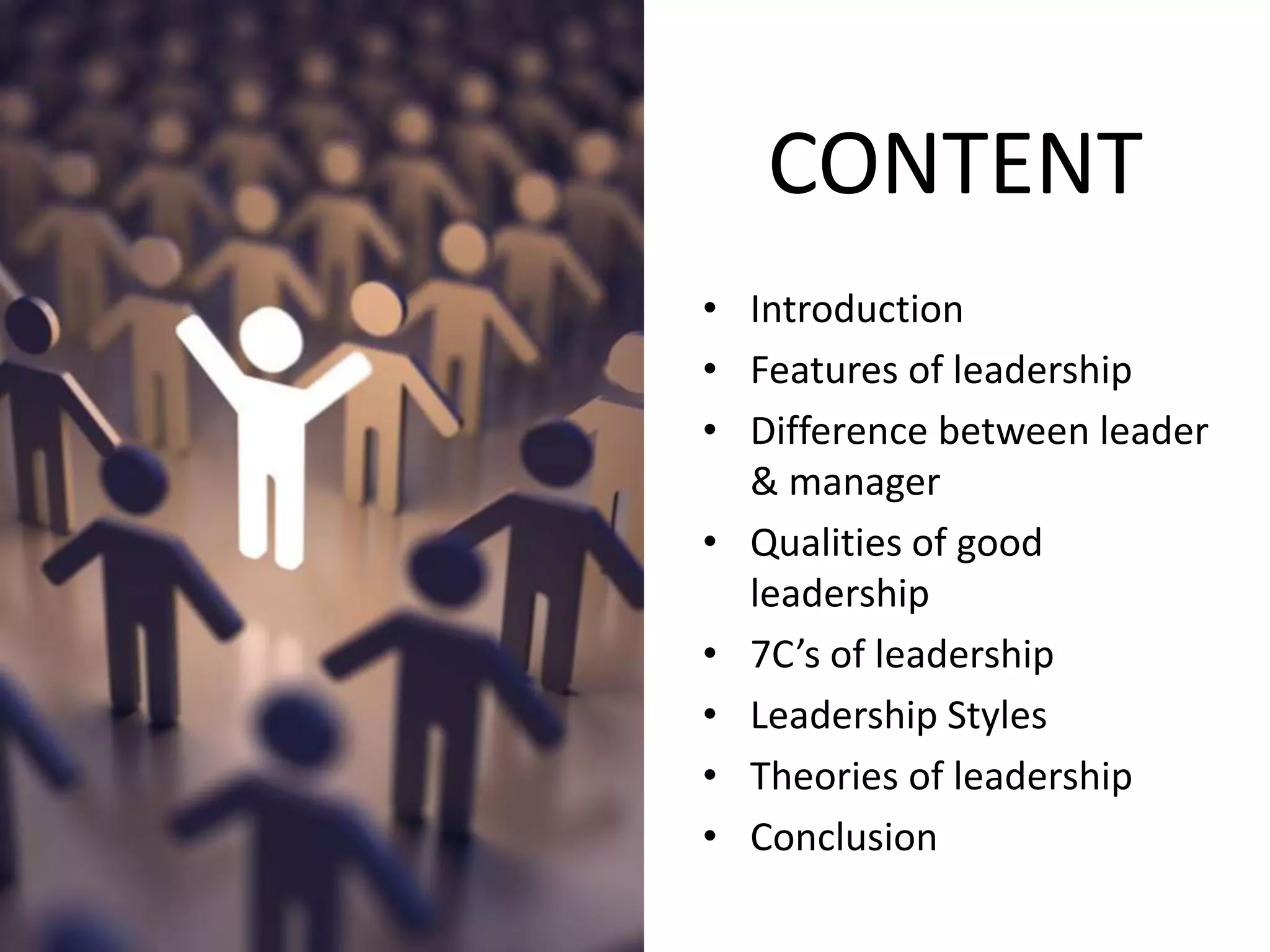Leadership styles can be categorized into three types: autocratic, democratic, and laissez-faire. Autocratic leaders centralize power and decision-making, democratic leaders involve others in the process, and laissez-faire leaders give employees freedom in decision-making. Other leadership styles discussed include bureaucratic, paternalistic, transactional, transformational, and charismatic. Theories of leadership have attempted to understand what traits or behaviors make effective leaders, with some focusing on innate qualities and others on situational factors and flexibility in leadership approach.







































